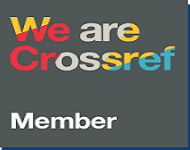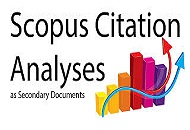Maximizing Potential : 5W+1H Reading Comprehension Strategy for Student with Moderate Intellectual Disability
DOI:
https://doi.org/10.33394/jp.v11i4.12877Keywords:
Moderate Intellectual Disability, Reading Comprehension, 5W 1H Strategy.Abstract
This study aims to enhance the reading comprehension skills of elementary school students with moderate intellectual disabilities through a single-subject method. In this study, the researchers use the 5W + 1H strategy to help students understand the meaning of the text. The research data was collected using observation guidelines, which then will be analyzed by using pretest-posttest techniques to assess the subject’s reading comprehension skills improvements. Teaching the 5W + 1H principle - which emphasized the question words why and how using visual images and keywords - was found to be effective in enhancing the subject’s reading comprehension. This finding also explained that this method could maximize the potential of students with moderate intellectual disabilities. The instruction on the question words why and how was particularly effective in increasing the subject's understanding of questions as well as leading him to provide correct and contextually appropriate responses. However, using visual images as a learning aid, especially for why and how questions, seemed less effective, as evidenced by the subject's reliance on keywords within the sentence. In the future, this strategy can be employed by educators to enhance reading comprehension skills for students with moderate intellectual disabilities.
References
American Psychological Association. (2023, November 15). Dictionary of Psychology. https://dictionary.apa.org/intellectual-disability
Azatyan, T., & Alaverdyan, A. (2020). Children With Intellectual Disabilities: Challenges In Education. Armenian Journal of Special Education, 4(1), 77–85. https://doi.org/10.24234/se.2020.2.2.236
Badan Pengembangan dan Pembinaan Bahasa Kementerian Pendidikan, K. R. dan T. (2021). Kumpulan Buku Anak Kementerian Pendidikan, Kebudayaan, Riset, dan Teknologi. https://docs.google.com/spreadsheets/d/159Sfdrd8XNdcm5Qgy6BBeAsBCI_4e3CuikrZ1Y7zFwA/edit?gid=0#gid=0
Barth, A. E., Vaughn, S., Capin, P., Cho, E., Stillman-Spisak, S., Martinez, L., & Kincaid, H. (2016). Effects of a text-processing comprehension intervention on struggling middle school readers. Topics in Language Disorders, 36(4), 368–389. https://doi.org/10.1097/TLD.0000000000000101
Bethune, K. S., & Wood, C. L. (2013). Effects of Wh-Question Graphic Organizers on Reading Comprehension Skills of Students with Autism Spectrum Disorders. 48(2), 236–244.
Browder, D. M., Hudson, M. E., & Wood, A. L. (2013). Teaching Students with Moderate Intellectual Disability Who Are Emergent Readers to Comprehend Passages of Text. Exceptionality, 21(4), 191–206. https://doi.org/10.1080/09362835.2013.802236
Cairns, H. S., & Ryan, J. (1978). Who, Why, When, and How: A Development Study. Journal of Child Language, 5(3), 477–488. https://doi.org/10.1017/S0305000900002105
Di Blasi, F. D., Buono, S., Città , S., Costanzo, A. A., & Zoccolotti, P. (2018). Reading deficits in intellectual disability are still an open question: A narrative review. Brain Sciences, 8(8). https://doi.org/10.3390/brainsci8080146
Gaber, S. A., Allam, S. F., El-Amin, M. A. M., Hamad, A. M., Abdel Fattah, N. E. E., Ibrahim, A. H., Al Hasan, S. A., Al-Ali, O. A., & Alboray, H. M. (2023). Improving the Reading and Writing Skills of Students with Mild Intellectual Disability: The Effectiveness of Infographics. International Journal of Learning, Teaching and Educational Research, 22(11), 1–17. https://doi.org/10.26803/ijlter.22.11.1
Gersten, R., Williams, J. P., & Baker, S. (2001). Teaching Reading Comprehension Strategies to Students With Learning Disabilities: A Review of Research. 71(2), 279–320.
Joseph, L., Ross, K., Xia, Q., Amspaugh, L. A., & Accurso, J. (2023). Reading Comprehension Instruction for Students with Intellectual Disabilities: A Systematic Literature Review. International Journal of Disability, Development and Education, 70(3), 314–339. https://doi.org/10.1080/1034912X.2021.1892033
Katims, D. S. (2001). Literacy Assessment of Students with Mental Retardation: An Exploratory Investigation. Education and Training in Mental Retardation and Development, 36(4), 363–372.
Kementerian Pendidikan dan Kebudayaan Republik Indonesia. (n.d.). Peraturan Menteri Pendidikan Nasional Republik Indonesia.
Knight, V. F., Creech-Galloway, C. E., Karl, J. M., & Collins, B. C. (2018). Evaluating Supported eText to Teach Science to High School Students With Moderate Intellectual Disability. Focus on Autism and Other Developmental Disabilities, 33(4), 227–236. https://doi.org/10.1177/1088357617696273
Mangunsong, F. (2014). Psikologi dan Pendidikan Anak Berkebutuhan Khusus : Vol. Jilid Kedua (Jilid Kedua). Universitas Indonesia.
Miltenberger, R. G. (2016b). Principles and Procedures Behavior Modification: Vol. Sixth Edition. Cengage Learning. www.cengage.com/highered.
Nephawe, F. T. (2023). Exploring the Use of Wh-Questions for Reading Comprehension Text at a Rural-Based Secondary School. JET (Journal of English Teaching), 9(3), 402–415. https://doi.org/10.33541/jet.v9i3.4748
Sanders, E. J., & Erickson, K. A. (2018). Wh – Question Answering in Children with Intellectual Disability. Journal of Communication Disorders, 76, 79–90. https://doi.org/10.1016/j.jcomdis.2018.09.003
Satake, E., Vinoth, J., David, L., & Maxwell. (2008). Handbook of Statistical Methods: Single Subject Design. Plural Publishing.
Sermier Dessemontet, R., Geyer, M., Linder, A. L., Atzemian, M., Martinet, C., Meuli, N., Audrin, C., & de Chambrier, A. F. (2024). Effects of Shared Text Reading for Students with Intellectual Disability: A Meta-Analytical Review of Instructional Strategies. Educational Research Review, 44. https://doi.org/10.1016/j.edurev.2024.100615
Setiawan, A., Pusporini, W., & Dardjito, H. (2020). Observation Instrument for Student Social Attitude in Primary School: Validity and Reliability. Jurnal Penelitian Dan Evaluasi Pendidikan, 24(1), 76–87. https://doi.org/10.21831/pep.v24i1
Sevcik, R. A., Barton-Hulsey, A., Walters, C., & Romski, M. A. (2019). Reading Interventions for Individuals with Intellectual and Developmental Disabilities: a Review. International Review of Research in Developmental Disabilities, 57, 81–118. https://doi.org/10.1016/bs.irrdd.2019.08.001
Shelton, A., Wexler, J., Silverman, R. D., & Stapleton, L. M. (2019). A Synthesis of Reading Comprehension Interventions for Persons With Mild Intellectual Disability. Review of Educational Research, 89(4), 612–651. https://doi.org/10.3102/0034654319857041
Smith, R., Snow, P., Serry, T., & Hammond, L. (2021). The Role of Background Knowledge in Reading Comprehension: A Critical Review. Reading Psychology, 42(3), 214–240. https://doi.org/10.1080/02702711.2021.1888348
Solari, E. (2014). Longitudinal Prediction of 1st and 2nd Grade English Oral Reading Fluency in ELL. Journal of Adolescence, 74(4), 274–283. https://doi.org/10.1002/pits
Stevens, M. A., & Burns, M. K. (2021). Practicing Keywords to Increase Reading Performance of Students with Intellectual Disability. American Journal on Intellectual and Developmental Disabilities, 126(3), 230–248. https://doi.org/10.1352/1944-7558-126.3.230
Thyer, B. A., & Curtis, G. C. (1983). The Repeated Pretest-Posttest Single-Subject Experiment: A New Design for Empirical Clinical Practice. I. Behov. Ther. &Exp. Psychiar, 14(4), 311–315.
Van Wingerden, E., Segers, E., Van Balkom, H., & Verhoeven, L. (2017). Foundations of Reading Comprehension in Children with Intellectual Disabilities. Research in Developmental Disabilities, 60, 211–222. https://doi.org/10.1016/j.ridd.2016.10.015
Vaughn, S., Boardman, A., & K. Klingner, J. (2024). Teaching Reading Comprehension to Students with Learning Difficulties.
Wadihah, H., & Fauzi, A. (2021). Using Image Media on Reading Text to Improve Reading Comprehension of Students with Intellectual Disabilities. Jurnal Asesmen Dan Intervensi Anak Berkebutuhan Khusus, 51–56. https://doi.org/10.17509/xxxx.xxxx
Weiss, S., Markowetz, R., & Kiel, E. (2018). How to teach students with moderate and severe intellectual disabilities in inclusive and special education settings: Teachers’ perspectives on skills, knowledge, and attitudes. European Educational Research Journal, 17(6), 837–856. https://doi.org/10.1177/1474904118780171
Wood, L., Browder, D. M., & Flynn, L. (2015). Teaching Students with Intellectual Disability to Use a Self-questioning Strategy to Comprehend Social Studies Text for an Inclusive Setting. Research and Practice for Persons with Severe Disabilities, 40(4), 275–293. https://doi.org/10.1177/1540796915592155
Yulis, E. (2016). Upaya Peningkatan Kemampuan Membaca Melalui Media Gambar Simbol Untuk Anak Tunagrahita Sedang. https://doi.org/doi.org/10.29210/19000
Downloads
Additional Files
Published
How to Cite
Issue
Section
Citation Check
License
License and Publishing Agreement
In submitting the manuscript to the journal, the authors certify that:
- They are authorized by their co-authors to enter into these arrangements.
- The work described has not been formally published before, except in the form of an abstract or as part of a published lecture, review, thesis, or overlay journal.
- That it is not under consideration for publication elsewhere,
- That its publication has been approved by all the author(s) and by the responsible authorities tacitly or explicitly of the institutes where the work has been carried out.
- They secure the right to reproduce any material that has already been published or copyrighted elsewhere.
- They agree to the following license and publishing agreement.
Copyright
Authors who publish with Jurnal Paedagogy agree to the following terms:
- Authors retain copyright and grant the journal right of first publication with the work simultaneously licensed under a Creative Commons Attribution License (CC BY-SA 4.0) that allows others to share the work with an acknowledgment of the work's authorship and initial publication in this journal.
- Authors are able to enter into separate, additional contractual arrangements for the non-exclusive distribution of the journal's published version of the work (e.g., post it to an institutional repository or publish it in a book), with an acknowledgment of its initial publication in this journal.
- Authors are permitted and encouraged to post their work online (e.g., in institutional repositories or on their website) prior to and during the submission process, as it can lead to productive exchanges, as well as earlier and greater citation of published work.
Licensing for Data Publication
-
Open Data Commons Attribution License, http://www.opendatacommons.org/licenses/by/1.0/ (default)






